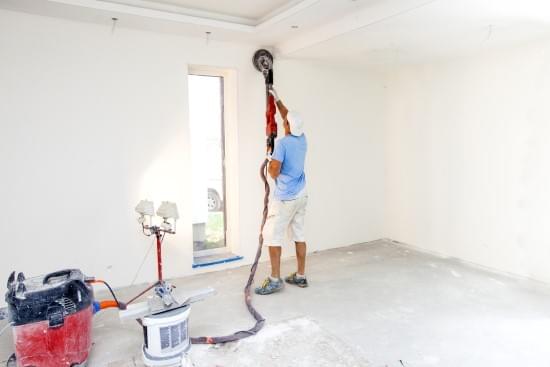
The term "grit" identifies a sandpaper's abrasiveness, and sandpaper manufacturers utilize a number method to indicate sandpapers' comparative roughness; smaller numbers are somewhat more abrasive than large amounts. The right grit for completing spackling adhesive products depends on the weight, or thickness, of the spackling product and that the fragility of those surfaces which surround the correct space. Spackling paste manufacturers normally define suitable sandpaper grits on commodity packaging. But if companies clarify self-improvement in obscure terms, such as light or moderate, a understanding of adhesive vocabulary will help you select the most suitable product for the project, read our latest post.
Standard spackling adhesive fixes generally involve for a medium-grit sandpaper. Medium grits are approximately 80-grit to 120-grit. However, lighter or lighter grits can apply to special spackling circumstances. Weightier grits, represented by numbers bigger than 80, strip and then remove heavily destroyed paint before to mend. Lighter grits, represented by amounts larger than a hundred and twenty, offer the finest degree of smoothness. Painting hides many visible inconsistencies. If you intend to paint the mend, you likely do not need to exceed 120-grit sandpaper.
Whilst a free part of sand-paper suffices for modest spackling patches, sanding accessories cut the time and hard work for substantial initiatives. Frequent equipment for spackling jobs involve hand sanders and prevent sanders. Partial sheets of sandpaper attach to the hand sander's and block sander's flat bottom plates, normally by a clamping mechanism. The base plate keeps the sand-paper tight as employees utilize the application's grips to evenly draw the paper across the dried spackling adhesive.
Drywall professionals utilize the moist sanding technique to lower dust exposure and jumble during gallbladder completing operations. Like asphalt combined compound, spackling paste is water soluble, and you are able to apply wet sanding techniques to conventional spackling repairs. To damp sand combined compound and spackle, drywall finishers soften a sponge with clean water and then lightly rub the sponge from the dehydrated chemical or spackle. Like glue, the damp sponge smooths the compound's coating. Even though dry sanding throw away becomes air borne dust, then moist sanding waste becomes a moist adhesive that absorbs into the sponge. Although nearly any house sponge is fit for damp sanding, technical drywall spores are designed to hold up against walls.
Dry sanding spackling adhesive and drywall joint compound produces irritating and perhaps detrimental debris. To steer clear of dangerous levels of vulnerability to dust, workers need to put on skin, eye and respiratory security whereas dry sanding. Skin protection comprises gloves and interrogate garments. To fully safeguard eyes, staff ought to put on gloves which fully discriminated contrary to the face. Most importantly, permitted respirators avoid inhalation of possibly damaging debris particles.